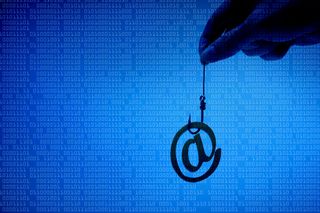Microsoft Outlook displays full contact details for spoofed senders
Product harvests details from Active Directory without checking, say researchers

Cyber security research company Avanan has highlighted an omission in Outlook that it says renders the product vulnerable to phishing techniques.
In a blog post published today, the Check Point-owned company said that the Microsoft email client would display extensive details about spoofed email senders without authenticating the email first.
An attacker can send a spoofed email to the target, pretending to be from someone in the organization. The organization's Outlook client then looks up the spoofed sender's details in the company's Active Directory instance, filling in extra details for their identity.
Those details include photos, files shared between users, legitimate email addresses, and phone numbers. They can also see all of their previous communications with the spoofed colleague, creating a convincing listing in the victim's Outlook client that gives the spoofed email greater credibility.
The attack can be used for typical phishing purposes including credential harvesting.
According to Avanan's researchers, Outlook does not authenticate emails using technologies like the Sender Policy Framework (SPF) or DomainKeys Identifed Mail (DKIM). Instead, it leaves this to security tools that analyze emails before they reach a user's inbox.

Protecting every edge to make hackers’ jobs harder, not yours
How to support and secure hybrid architectures
SPF is a record listing IP addresses that are authorized to send emails from a domain, while a DKIM check allows an email's sender to sign it with a private key that the receiving software can then check.
Get the ITPro. daily newsletter
Receive our latest news, industry updates, featured resources and more. Sign up today to receive our FREE report on AI cyber crime & security - newly updated for 2024.
To take advantage of this technique, the hacker must first successfully spoof the target organization's domain in a way that gets past anti-phishing scanners (assuming they have them).
"Spoofing is also made easier because Microsoft does not require verification before updating the user image on an email," Avanan's researchers said. "It will display all contact data for a user, even if that user has an SPF fail."
Microsoft users have asked about DKIM and SPF checks in Outlook on Microsoft's technical forum for Outlook Desktop, but with little success.
To resolve these issues, Avanan recommends that organizations use layered security to analyze mails before the inbox, checking for malicious files and links. They should also check a domain's reputation and run an SPF and DKIM check.
The Domain-based Message Authentication, Reporting & Conformance (DMARC) policy, built on SPF and DKIM, helps here. It links to the From: domain, and supports policies for recipient handling of authentication failures, along with reporting to senders. Avanan also recommends that admins protect any applications interacting with Active Directory.
In September, another researcher noted that Outlook would display a person's real contact details even if a phishing email used a homograph-based domain that looked similar to a legitimate one.
Danny Bradbury has been a print journalist specialising in technology since 1989 and a freelance writer since 1994. He has written for national publications on both sides of the Atlantic and has won awards for his investigative cybersecurity journalism work and his arts and culture writing.
Danny writes about many different technology issues for audiences ranging from consumers through to software developers and CIOs. He also ghostwrites articles for many C-suite business executives in the technology sector and has worked as a presenter for multiple webinars and podcasts.





